
Conditions We Treat
Sciatica! It sends shivers down your spine quite literally. If you’re wincing from pain that shoots through your lower back down to your legs, you may be one of many grappling with this common culprit of agony. But what exactly is sciatica, and how can you alleviate the pain and prevent it from hijacking your life?
What is Sciatica?
First, it is important to note that sciatica is not a standalone condition or diagnosis. Sciatica describes the symphony of symptoms stemming from the compression or irritation of the sciatic nerve. The cause of this compression or irritation is the underlying reason for your pain and defines the type of treatment you will need to feel better.
The sciatic nerve begins in your lower spine and travels through your buttocks down to your feet. It is the body’s longest and largest nerve, and when it’s injured or irritated, it does not whisper – it roars. The specific characteristics of sciatica include a pain that originates in the back or buttocks and travels down the leg. Sufferers typically report pain on one side of the body which may worsen with sitting, coughing, or sneezing. The pain, often depicted as a sharp or burning sensation, might be accompanied by tingling, pins and needles, numbness, muscle weakness and even incontinence! The symptoms are as diverse as its potential causes, which range from bulging disks to the physical strain of pregnancy.

What Makes Sciatica Worse?
Numerous factors can exacerbate sciatica, including obesity, an inactive lifestyle, smoking, and sleeping on a mattress that is too soft or too firm. Risk factors like age, twisting your back or lifting heavy loads at work, and even diabetes, can intensify your discomfort.
What Can Bring Relief?
Heat and ice therapy, over-the-counter medications, and proper posture are accessible first steps in managing the pain. Additionally, physical activity and maintaining a healthy weight can lead to significant improvements. Embedding core strengthening exercises into your daily routine can also provide relief. Strong core muscles take the pressure off your spine and can reduce the risk of many of the types of injury that cause sciatica.

Treatment Options for Sciatica
For most, the agony can wane without surgical intervention. Conservative treatments include physical therapy and medications, while epidural steroid injections offer a more intermediate solution. You may consider surgery if all else fails or if your quality of life severely declines.
It’s crucial to remember that the path to improvement isn’t one-size-fits-all. Exercise therapy, chiropractic adjustments, yoga, acupuncture, and massage therapy offer a unique way to engage the body’s innate healing processes. These conservative treatments are key players in the management of sciatica, striving to provide both immediate comfort and long-term relief.
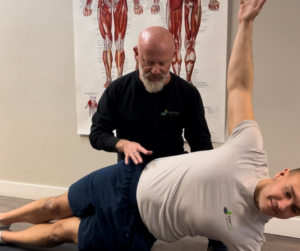
Your Role in Sciatic Nerve Pain Management
Complications from sciatica, such as ongoing pain or muscle weakness, can indeed cast long shadows over one’s quality of life. Avoiding these dark outcomes means investing time into prevention. Maintaining good posture, staying active, and allowing for recovery when back pain first whispers its warning signs will help minimize sciatic nerve pain.
Engage in regular exercise to activate and engage the core muscles supporting your spine, and practice good posture to relieve pressure on your lower back. If you spend hours sitting, change positions often and, if necessary, take breaks to move around. Adopt a holistic approach to health, with sufficient rest periods to speed recovery when needed.
Avoid tobacco products, ensure you’re lifting objects with correct form to avoid strain, and equip yourself with knowledge. The more informed you are about your condition, the more empowered you are to make decisions that benefit your health.
Conclusion
Navigating the waters of sciatica involves understanding the condition, recognizing risk factors, engaging in preventative efforts, and exploring a spectrum of treatments. Remember, while the pain might be profound and sometimes lead to complications, most people recover within a few weeks.
For persistent or severe pain, especially if accompanied by additional symptoms such as muscle weakness or loss of bowel or bladder control, seeking medical care is imperative. With the right advice and action, you’re on your way to reclaiming comfort and command of your well-being.
Your Health is Your Wealth
Remember, your pursuit of relief is not a solitary expedition. Please, if you are burdened by the weight of sciatic discomfort, reach out to one of our physiotherapists today and book an initial assessment.
Written By: DeVera Nybo, MBA, Owner Newleaf Total Wellness Centre.

Conditions We Treat
Navigating the Chill of a Frozen Shoulder – A Personal Journey to Thawing and Recovery
Frozen shoulder – the term itself may suggest images of arctic calm and stillness. But if you have this condition, you’ll quickly discover the metaphor extends far beyond the peaceful imagery and into a realm of stiffness, discomfort, and an unmistakable freeze on your daily activities.
Living with a frozen shoulder can be an excruciating and disabling experience. This painful condition limits your arm’s range of motion, causing daily activities to become challenging. I understand frozen shoulder intimately, not just as a concept but as a personal battle. If you feel the icy grip of a frozen shoulder, I come bearing warm tidings from my experience. It is possible to melt away the limitations with the right approach.

Understanding Frozen Shoulder
Frozen shoulder (adhesive capsulitis) is a condition marked by pain, stiffness, and limited range of motion in your shoulder. Symptoms usually begin gradually and worsen over time before a slow thaw begins. If left untreated, the natural recovery might take as long as a glacial two or three years.
The Comprehensive View of Frozen Shoulder article published by PMC explains the complexity of this syndrome, pointing to factors such as systemic inflammation and metabolic imbalances that may contribute to its onset. Additionally, immobility following an injury, conditions like diabetes or thyroid disorders, or even chronic stress are all potential causes. However, no one really knows what causes frozen shoulder.
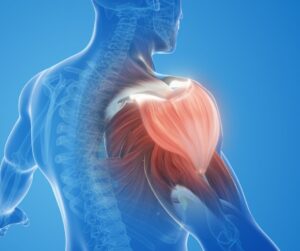
The Stages of Frozen Shoulder
It typically progresses through three distinct stages, each with its symptoms and challenges. Understanding the stages of frozen shoulder can help you better manage your condition and work towards recovery.
Stage 1: Freezing
During this stage, you may notice severe pain and stiffness in your shoulder that gradually worsens over time. During this stage, any shoulder movement can cause discomfort, with the pain often worsening at night. The range of motion in your shoulder will become more limited, making it difficult to perform everyday tasks such as reaching overhead or behind your back. The pain is typically dull or aching at rest but sharp with movement. It’s important for individuals experiencing these symptoms to seek medical advice, as early intervention can help manage the pain and potentially reduce the duration of this stage. This stage can last anywhere from 6 weeks to 9 months and is characterized by inflammation and thickening of the capsule surrounding the shoulder joint.
Stage 2: Frozen
During the frozen stage, the pain may begin to diminish. Still, the shoulder becomes stiffer, leading to a significant decrease in mobility. The reduction in pain is a somewhat deceptive sign of improvement, as the stiffness remains a substantial barrier to regular activity and function. In this phase, the shoulder may be so stiff that everyday tasks, like dressing, become difficult, if not impossible. It’s crucial to continue with therapy during this time as the focus shifts towards improving the range of motion. Patience and persistence are key, as progress can be slow but is vital for recovery. This stage can last from four to twelve months.
Stage 3: Thawing
The final phase of frozen shoulder is known as the thawing stage, where the stiffness gradually decreases and movement improves. During this period, individuals may notice a slow but steady increase in their range of motion. The pain subsides significantly, allowing for more intensive physical therapy and exercise to regain shoulder function. Staying committed to your rehabilitation plan is essential, as consistency is crucial for full recovery. Despite the challenges faced in the earlier stages, most people return to their normal activities and regain close to, if not complete, shoulder function by the end of the thawing stage, which can last from six months to two years.
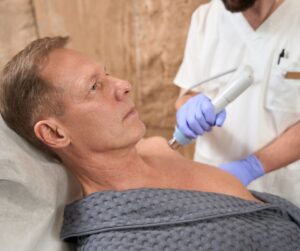
The Healing Ensemble for Frozen Shoulder
My salvation from this frigid condition arose through the collective expertise of a carefully chosen team. I had a physiotherapist, a chiropractor, a Registered Massage Therapist (RMT), and an acupuncturist working together.
Interestingly, the BC Chiropractic Association suggests core stability plays a fundamental role in injury recovery, including for frozen shoulder. Meanwhile, several studies highlight the role of nutrition in managing inflammation and aiding in hormonal balance. So, adding a kinesiologist, athletic therapist, and holistic nutritionist to your team may also be a good idea.
Physiotherapy for Mobility
With their sophisticated grasp of movement and mechanics, physiotherapists play a crucial role in helping patients with frozen shoulder regain function and reduce pain. Through mobility and strengthening exercises, intramuscular stimulation/ dry needling, manual therapy techniques, and education, physiotherapists can support individuals on their journey towards improved mobility and quality of life. They use techniques like myofascial release, gentle dynamic movement, and joint mobilization. Furthermore, physiotherapy for frozen shoulder often includes modalities such as heat therapy, ultrasound, shockwave, or electrical stimulation to help reduce pain and inflammation in the affected area. These modalities can provide temporary relief from symptoms while working alongside other treatments.

Chiropractic to the Rescue
Chiropractors focus on manipulating the body’s joints to induce healing and improve mobility, all while decreasing pain. Their informed techniques work on restoring joint mobility and treating the surrounding architecture, emphasizing a holistic recovery. These techniques often include mobilization and manipulation of the shoulder joint and the joints in the neck and upper back, which can also become stiff and tight when dealing with a frozen shoulder. Chiropractors use muscle release techniques to help restore proper mobility of the shoulder and surrounding tissue. At the same time, corrective exercises help maintain the range of motion and increase strength and stability within the shoulder. With its focus on improving joint function, reducing inflammation, creating personalized treatment plans, and promoting overall wellness, chiropractic care offers a comprehensive approach to alleviating frozen shoulder symptoms and restoring optimal function in your shoulders.

The Gentle Touch of Massage Therapy
The path to healing benefits significantly from the relaxing yet deep-reaching techniques a registered massage therapist applies. Their trained hands work wonders, encouraging tight muscles to release their grip and become more flexible. In addition to loosening tight muscles and improving circulation, massage therapy can help reduce stress and promote relaxation.
Chronic pain and limited mobility can take a toll on both physical and mental well-being, leading to increased stress levels. Massage therapy provides a safe space for patients to relax, unwind, and release physical and psychological tension. Furthermore, regular massage therapy sessions can help prevent future flare-ups of frozen shoulder by maintaining muscle flexibility and promoting overall joint health.

Acupuncture: Ancient Art of Precision
I found this modality indispensable in lessening the throbbing ache. With each targeted insertion, my shoulders experienced minor releases, combining into a cascade of greater movement and relief. Studies show that acupuncture triggers the release of endorphins, which are the body’s natural painkillers. This helps to reduce discomfort associated with frozen shoulder. Additionally, acupuncture can help improve the range of motion in the shoulder joint by promoting relaxation in tight muscles and enhancing blood flow to the area. By targeting key points related to the shoulder joint and surrounding muscles, acupuncture can help reduce pain, increase mobility, and promote healing naturally.
A Resource You Can Count On
At Newleaf Total Wellness Centre, we understand that recovering from frozen shoulder requires a multi-faceted approach. That’s why our team consists of various healthcare professionals who specialize in different areas. With a combination of hands-on therapy from a physiotherapist and RMT and alternative treatments like acupuncture and holistic nutrition, we have it all under one roof.
One of the key benefits of working with Newleaf Total Wellness Centre is the convenience of meeting all your healthcare needs in one place. Instead of running to different clinics for various treatments, you can trust our team to coordinate your care and provide seamless communication between providers. Working with the team at Newleaf will save you time and energy and ensure you receive the best possible care tailored to your needs.
Final Thoughts
Your battle against a frozen shoulder is not one you should fight alone. Armed with patience, the correct information, and an expert team, your recovery need not be an ice age away. Wield these interventions like a torch and blaze a trail toward free movement. Remember, as the stroll toward wellness unfolds, each small victory earned along this expedition is worth celebrating.
Reach out to Newleaf Total Wellness Centre and begin your journey to thaw today.
“Strive for progress, not perfection.” – Every step is progress at Newleaf Total Wellness Centre.
Written By: DeVera Nybo, MBA, Owner/CEO Newleaf Total Wellness Centre
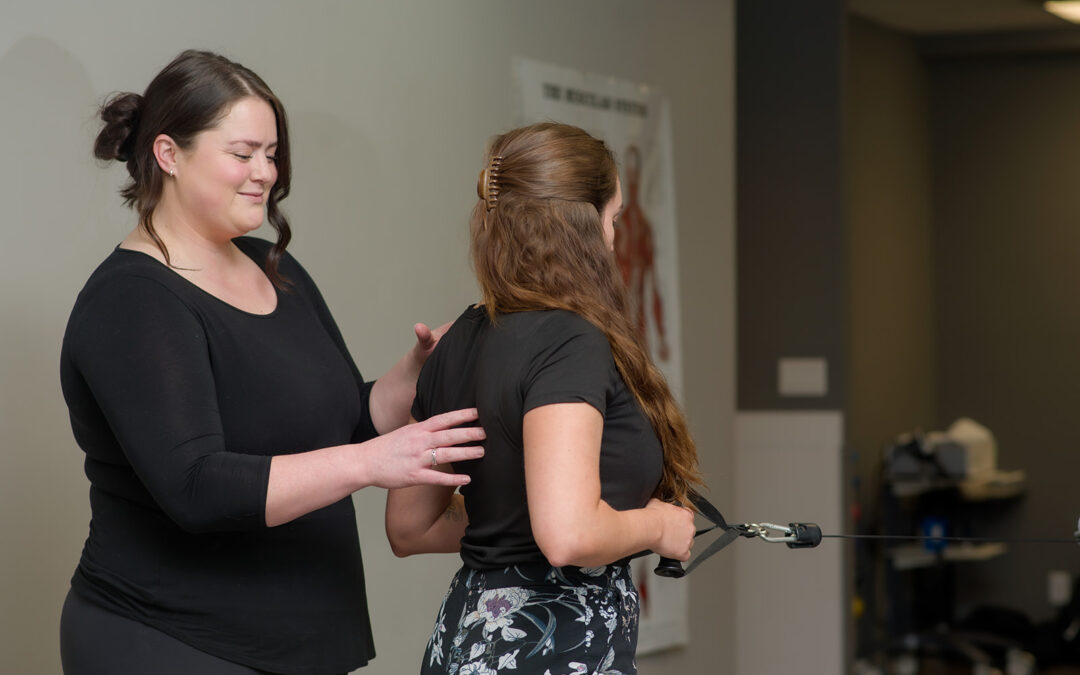
Injury Rehab and Prevention
Experience the power of Physio-Directed Active Rehab at Newleaf Total Wellness Centre. Our treatments go beyond the norm, aiming not only for recovery but also for the enhancement of your overall strength and resilience.

At Newleaf Total Wellness Centre, patient care is more than a commitment; it’s our calling. Since 2009, we’ve been a sanctuary for healing and strength. Under new leadership since 2022, Ed and DeVera have kept the founding vision of helping patients become Stronger, Braver, and Better. They have pioneered proactive approaches focusing on patient-centred care through evidence-informed treatment.

Why Physio-Directed Active Rehab Is Vital for You
In a world where high-risk jobs and athletic pursuits push your boundaries, Physio-Directed Active Rehab plays a crucial role in supporting your health and performance. We tailor our program to meet your unique needs and arm you with the tools to prevent injuries and enhance your overall wellness.
Whether you’re an athlete striving for peak performance, a healthcare worker managing occupational hazards, or simply an individual keen on injury prevention, we crafted our active rehab with you in mind. Our dedicated team of Athletic Therapists and Kinesiologists are guided by the expert knowledge of our physiotherapists. They will cater the sessions to your needs, ensuring you receive the care and guidance you deserve.
Tailored to Empower
Physio-Directed Active Rehab is led by a skilled Athletic Therapist or Kinesiologist but billed under physiotherapy services. The team tailors exercises to equip you with strength and resilience during the 45-minute one-on-one sessions. Our service addresses the needs of individuals across the spectrum. From health enthusiasts keen on injury prevention to high-risk job employees, like Canada Post workers and healthcare aides we have a plan as unique as you. For workers fortunate enough to have unlimited physiotherapy coverage under their insurance plans, it is like having a personal trainer in a private gym for one-to-one sessions.
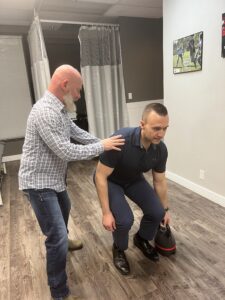
The Edge of Excellence
Here’s the Newleaf difference. We are not just a service but an interdisciplinary vision. We stand out as one of the few clinics in the area providing this type of program. Additionally, Physio-Directed Active Rehab is aligns with the CPTBC’s revised standards of practice to ensure exceptional public interest care. It’s an initiative resonating with our goal of helping our patients become Stronger, Braver, and Better.
Commitment to Success
After an initial assessment with one of our experienced physiotherapists, you’ll forge ahead with realistic goals. Ultimately, you will learn and enhance movement patterns for robust endurance and strength. Our promise to you is simple: personalized mentorship toward your best physical condition to keep you healthy and safe at work. Our vision at Newleaf Total Wellness Centre is about providing excellent service and also fostering an environment where patient care transitions into lifelong well-being.

Your Wins, Our Pride
Stories of success reverberate through the walls of Newleaf Total Wellness Centre. From the nurse who found new strength to combat the demanding shifts, to the care aide developing resilience against injury, your triumphs are the testimony of our service’s profound impact.
Take The Leap with Newleaf’s Physio-Directed Active Rehab
With expert advice grounded in years of practice, interdisciplinary vision, and human-focused care, we commit to guiding you on this restorative path. Book your session today to benefit from a personal trainer experience backed by the knowledge and education of our Athletic Therapists and Kinesiologists.
Join us at Newleaf Total Wellness Centre, where healing transcends treatment, and care is crafted with a vision of holistic well-being.
Contact us to schedule your first appointment and leap into the future of fortified well-being.
Disclaimer: You must have had an initial appointment with a Newleaf Physiotherapist before booking your Active Rehab session.
Written By: DeVera Nybo, MBA, CEO/Owner Newleaf Total Wellness Centre
—
Contact Information
- Phone: To schedule your session, call now 604-850-2511
- Email: Questions? Reach out via email [email protected]
- Address: Visit us at our location, A&B 2309 McCallum Road, Abbotsford, BC, nestled within the vibrant lands honoured by the hən̓q̓əmin̓əm̓ speaking peoples—xʷməθkʷəy̓əm (Musqueam), sel̓íl̓witulh (Tsleil-Waututh), and the Sḵwx̱wú7mesh-ulh Sníchim speaking peoples—Sḵwx̱wú7mesh Úxwumixw (Squamish Nation).

Women's and Children's Health
Picture this: you’re in the middle of a hearty laugh or a powerful sneeze, and suddenly, you feel it – that little, uninvited leak. It’s a bit embarrassing and not something you necessarily want to chat about at your next coffee meet-up. But here’s the deal: This is more common than you think, and it’s a sign that your pelvic floor may need some serious TLC.

Breaking the Silence
It’s high time we normalize conversations about pelvic floor issues. After all, the first step to solving a problem is acknowledging it exists. An essential part of this therapy is education and understanding the many roles played by your pelvic floor. At Newleaf Total Wellness Centre, we’re on a mission to bring the conversation about women’s health into the open, where it belongs.
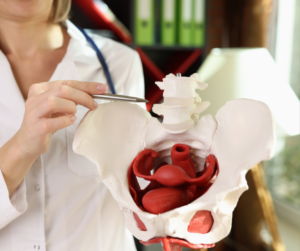
What on Earth is the Pelvic Floor, Anyway?
The pelvic floor is like a silent hero supporting your pelvic organs. It stabilizes the pelvis and spine, enhances sexual function, and supports bowel and bladder control. Think of your pelvic floor muscles as a hammock holding everything in place. Just like other muscles, they need care and, sometimes, rehabilitation.
Nearly 24% of people assigned female at birth will have pelvic floor dysfunction later in life. Its symptoms can manifest as frequent urges to urinate, constipation, or even a pressing fullness in the vaginal area. These are not merely inconveniences but problems that can affect one’s daily comfort and sense of well-being. Symptoms can range from discomfort and pain to constipation, frequent urination, and even sex-related distress.

The Unspoken Champion of Women’s Health – Pelvic Floor Physiotherapy
It is possible to sneeze without worry, laugh without hesitation and exercise without fear. How? Through a little-known champion of women’s wellness – pelvic floor physiotherapy.
Wellness warriors, fitness enthusiasts, new mothers – listen up! Pelvic floor therapy isn’t about Kegels (which can make your condition worse). Our therapists at Newleaf Total Wellness Centre use an array of techniques ranging from manual therapy, trigger point massage, and myofascial release to biofeedback and electrical stimulation. The treatments aim to strengthen and release these muscles to improve their function and, by extension, your life.
Our team of two physiotherapists and a kinesiologist are specifically trained in pelvic health. They are here to offer a comprehensive blend of therapy and tailored exercise prescriptions designed to get at and correct the root cause of issues. Treatments will help to:
- Strengthen and Release Muscles: Imagine regaining control and saying goodbye to unexpected leaks during your run or giggle fit.
- Boost Bladder and Bowel Control: Bid farewell to sprinting for the loo and hello to confidence.
- Enhance Sexual Pleasure: Nurture your intimate well-being by addressing discomfort and enhancing sensation.
- Bolster Postpartum Recovery: Bounce back stronger after childbirth with exercises geared towards new mamas.
- Improve Organ Support: Keep things lifted and supported, especially if you’re dealing with that annoying feeling of fullness or a vaginal bulge.

Wondering if Pelvic Floor Physiotherapy is Right for You?
Whether you’re a new mother navigating postpartum recovery, a dedicated yoga practitioner, or a woman looking to safeguard her healthcare future, pelvic floor health should be on your radar.
If you’ve experienced bladder leaks, struggles with postpartum recovery, painful intercourse, or other disruptions to your quality, know this – you’re not alone. Pelvic floor dysfunction plagues almost ¼ of women. It causes symptoms that range from mild inconvenience to severe discomfort and pain.

A Specialized Approach to Pelvic Floor Physiotherapy
Every person’s body is different, and every postpartum recovery is unique. This is why, when you visit Newleaf Total Wellness Centre, you’ll be given an individualized treatment plan. Our experts will review your symptoms, medical history, current habits, diet, exercise routines, and overall health in relation to your pelvic floor.
Our centre isn’t about running through a standardized checklist. We ask, we listen, and we care deeply. It’s a sanctuary where you’ll be greeted with understanding and leave with a solid game plan.
Beyond Postpartum Recovery
It’s not just new mothers who can receive help from these services. Fitness enthusiasts, women of all ages dealing with symptoms of pelvic floor dysfunction, and those who’ve had injuries or surgeries that affect these regions are all welcome. The benefits extend to sexual health, bladder and bowel control, and pain relief.
At Home with Technology
We understand that life is busy and making appointments can be tough, so Newleaf Total Wellness Centre recommends various home-based biofeedback technology options. These devices can help reinforce the exercises and techniques learned during therapy sessions, ensuring continual progression toward optimal pelvic floor health.

Your Wellness, Our Mission
We’re passionate about women’s wellness at Newleaf Total Wellness Centre. We stand ready to listen, assess, and guide you along the path to improvement. Whether you’re stepping into a gym postpartum or looking to regain confidence in your day-to-day activities, it’s time to say goodbye to “pee when you sneeze” moments.
Pelvic floor physiotherapy may be the key for many women to unlock a more active, secure, and comfortable life. Visit our website to learn more about our dedicated pelvic health services and our pelvic floor physiotherapists, Tajveer and Harman and consider starting your own success story.
For those eager to deepen your understanding, our resources draw from a breadth of respected institutions and specialists, including Beaumont, Cleveland Clinic, Loma Linda University Health, NAMS, Voices for PFD, and Mayo Clinic Health System, ensuring you’re backed by the best in the field.
Written by: DeVera Nybo, MBA, Owner/CEO Newleaf Total Wellness Centre
—
Disclaimer: The information provided in this blog post is for educational purposes only and is not a substitute for professional medical advice. Please consult with a healthcare provider before starting any new treatment.
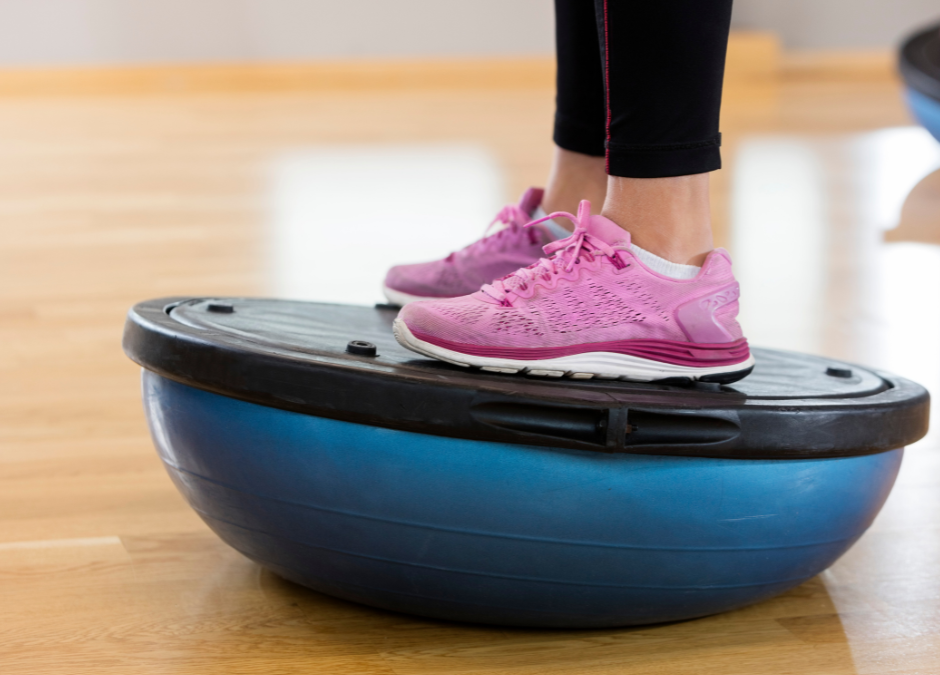
Injury Rehab and Prevention
Core stability is more than just a buzzword athletes toss around. It is at the foundation of a healthy, active lifestyle for everyone. Whether you’re an aspiring athlete, recovering from an injury, or seeking a healthier lifestyle, core stability should be at the heart of your fitness regimen. The core muscles represent more than sculpted abs; they are the foundation for all movement, strength, and balance. Whether performing a high-intensity exercise or just picking up groceries, a strong core delivers the power to strengthen and move muscles, allowing you to perform efficiently and effectively.
In this post, we’ll share insights from recent studies and provide a comprehensive overview of the core’s role in improving your game, functioning optimally in daily life, preventing injury and alleviating pain. Whether you’re curious about core workouts or searching for a solution to back pain, read on to discover how core stability can enhance your holistic well-being.

The Hidden Beneath: Core Muscles at Work
The core is your body’s powerhouse, where your center of gravity and movement originate. It consists of muscles that stabilize your hips, torso, and shoulders, functioning as a bridge between your upper and lower body.
Imagine your core muscles as the central link in a chain connecting your upper and lower body. Whether you’re hitting a tennis ball or cleaning the floor, the necessary motions either originate in your core or move through it. Without a stable starting point, these actions are less efficient and could lead to injury.
Having a strong and stable core has multiple benefits. It improves your posture, enhances daily functionality, and helps boost your athletic performance. Moreover, it reduces the risk of injuries and relieves back pain. It even improves balance and stability, particularly in older adults, reducing their risk of falls.
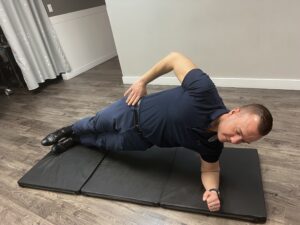
Core Stability: A Guard Against Injury
Recent studies, like the one titled “Effects of core stabilization exercise and strengthening exercise on proprioception, balance, muscle thickness, and pain-related outcomes in patients with subacute nonspecific low back pain,” highlight the profound impact core-stability exercises have on balance and even muscle thickness. Remarkably, these exercises increased stability and reduced pain, functional disability, and fear of movement among participants [1].
Another study on older women with low back pain discovered that core stability training significantly improved pain intensity, disability, and balance tests [2].
No athlete wants to be sidelined by an injury due to instability. High-performance athletes and fitness enthusiasts know the value of a strong core. It improves their strength and speed, enhances their agility and power, and reduces the risk of injury.
Furthermore, weak core muscles often lead to poor posture and are frequently at the heart of lower back pain problems. Strengthening them can help alleviate the discomfort and even reduce the risk of falls, which is particularly important for older adults. A strong core is the body’s armour, shielding it from unnecessary harm.

Daily Life Made Easier with Enhanced Posture
Consider the simple daily tasks that rely on core stability – from bending to put on shoes to looking over your shoulder or performing a task at work. Core stability affects nearly everything we do. Enhanced posture and alignment resulting from core strength exercises effortlessly support your daily life chores. Mayo Clinic experts support this claim with evidence that core exercises aid routine fitness and functional goals[3].
A Guide to Core Stability
One might think sit-ups and crunches are the way to a strong core. But to your surprise, these traditional exercises may not be the most effective for core stability and might even cause harm. Instead, try low-impact, functional exercises that engage multiple muscle groups.
Start with planks, side planks, or stability ball exercises, and focus on controlled movements. These exercises are particularly effective in building core strength [4].
Remember, increasing reps as your strength improves and working with professionals like physiotherapists, kinesiologists, or athletic therapists can offer tailor-made exercises to ensure your safety.
Suppose you’re noticing the symptoms of weak core stability, such as poor posture or frequent injuries, or simply want to enhance your performance in sports and daily life. In that case, consulting with a professional is a good idea. They can help you start a customized exercise routine that fits your needs.
Additionally, Institutions like the College of Physical Therapists of British Columbia, BC Chiropractic Association, Mayo Clinic, and Nationwide Children’s Hospital offer a wealth of information and resources on core stability[5]. They understand the significance of a strong core for overall health and injury prevention and provide in-depth guidance on maintaining core health.

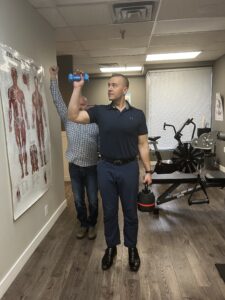
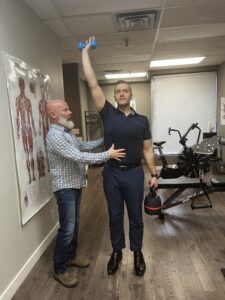
Keeping Your Core Promise
The first step is to understand the importance of core stability in fitness and wellness. Applying the knowledge through practice is next.
In closing, appreciate the core’s significance in your physical foundation. A stable core propels you forward in your athletic endeavours and anchors your daily movements in strength. Uncover the potential buried within your core and set the stage for a balanced, healthier life.
Encourage yourself to seek professional assistance to adopt a safe and effective core stability regimen. Remember, establishing a strong core isn’t an overnight affair; it’s a continuing commitment to your body’s center of power. Book an appointment today with a professional and begin your own core stability success story.
Written By: DeVera Nybo, MBA, CEO/Owner Newleaf Total Wellness Centre
—
References:
- Hlaing, Su Su, et al. “Effects of core stabilization exercise and strengthening exercise on proprioception, balance, muscle thickness, and pain-related outcomes in patients with subacute nonspecific low back pain: a randomized controlled trial.” BMC Musculoskeletal Disorders (2021)
- European Review of Aging and Physical Activity study on core stability and older women with low back pain.
- Mayo Clinic. “Core exercises: Why you should strengthen your core muscles.”
- Nationwide Children’s Hospital. “Core Stability: What Is It and Why Is It Important?”
- College of Physical Therapists of British Columbia (CPTBC).
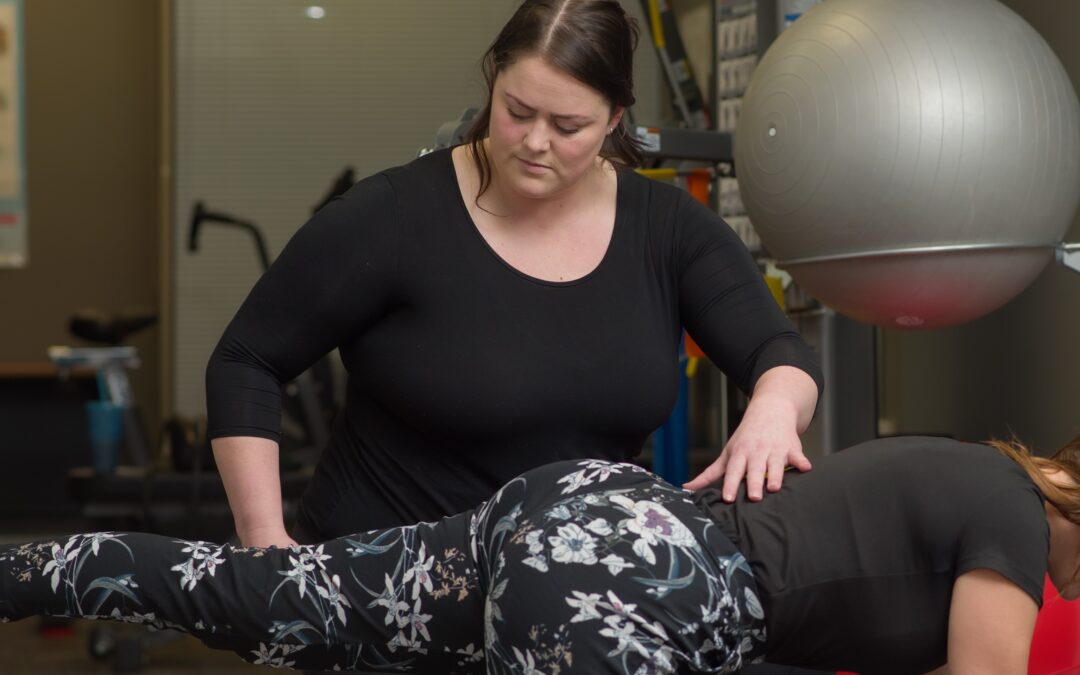
Injury Rehab and Prevention
Active rehab is the beacon of hope that can guide you to a physical recovery and also a restoration of your entire self. Recovering from an injury is more than just healing your body. It’s about getting your life back. Whether you’re an athlete, someone who’s been in an accident, or recovering from surgery, this is a powerful ally in your healing journey..
Active rehabilitation cleverly combines rest with specific exercises, tailored to help you heal physically, and emotionally too. Through a series of thoughtfully assigned activities, it helps rebuild your strength and brings you closer each day to where you aspire to be post-injury.
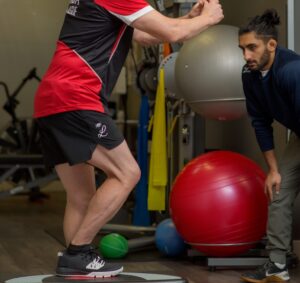
The Active Rehab Advantage
Active rehabilitation is a structured program developed by health experts to help individuals recover from injuries. It includes exercises like stretching, strength training, balance exercises, and specific movements. This tailored approach considers your injury, lifestyle, and goals. The benefits include quicker recovery, improved strength and flexibility, and better injury prevention.
This approach looks beyond the body, considering how physical health, mental well-being, and your environment are connected. Research shows that active rehab, especially for car accident or workplace injury patients, is crucial for recovery. Organizations like the Insurance Corporation of British Columbia (ICBC) and WorkSafe BC recognize the importance and effectiveness of these treatment interventions supervised by qualified professionals like physiotherapists.
Moving early can reduce pain and speed up recovery, contrary to the old idea prolonged immobilization is the key to healing. Active rehab fights immobility’s negative effects on muscles and mental health. Following a planned active rehab program can help you recover faster.

Success Stories
There are many impressive recoveries through active rehab. These cases show improvements like flexibility and strength, but also tell stories of regaining confidence and independence. With professional help, patients can return to daily activities sooner and with more confidence.
Each of us is as unique as our fingerprints, and our recovery pathways should reflect that individuality. Active rehab excels at customizing plans to meet different needs. Injured patients receive personalized plans that heal both body and mind. For cases like ICBC, participating in active rehab can be crucial for getting extensions and approved treatment plans. Athletes benefit from tailored training plans that help them return to their sport.
Partnering with Professionals for Your Recovery
Active rehab isn’t a solo journey. It requires skilled professionals to guide, support, and motivate you. These professionals are more than just therapists; they are mentors, educators, and your source of encouragement. Consider how teaming up with these professionals can lead to your recovery. By partnering with professionals dedicated to your overall well-being, you’re not just joining a program, you’re investing in a transformative process that goes beyond recovery.
Remember, your therapist functions as a collaborative partner in your journey towards wellness. Active participation in therapy is crucial for optimal results. Your dedication to homework tasks significantly enhances the effectiveness of the treatment. Recovery primarily occurs in the comfort of your home, with the clinic visits serving as checkpoints on your progress. Your therapist’s role is to provide guidance, support, and monitoring while ensuring the safety of your exercises and activities. Ultimately, the key to progress lies in your commitment and effort.
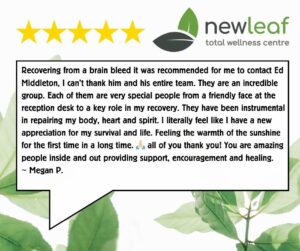
Call to Active Rehab
The path to recovery, though uniquely personal, doesn’t have to be solitary. By actively taking part in your rehabilitation and being the main character in your story, you can bring about many positive changes that reshape your recovery journey.
Whether you’re recuperating from an injury, preparing for surgery, or on a road to recovery from a car accident or on WorkSafeBC claim, consider active rehabilitation. Collaborate with experts, set targets, and see the transformation happen. Don’t settle for a slow recovery. Seize control of your healing journey by including active rehabilitation in your routine and recover faster.
Start your active rehabilitation today and redefine what recovery means to you. Book an appointment with Randi or Jaskiat here.
Written by: DeVera Nybo, MBA, CEO/Owner Newleaf Total Wellness Centre

Real Patient Success Stories
A common question at Newleaf Total Wellness Centre is, “Is this covered?”. When you have coverage for a service, your health plan will contribute payment towards some or all of the costs. Do you ever wonder why your clinic staff can’t tell you what your health insurance coverage is for chiropractic, physiotherapy, massage therapy or other services? You’re not alone. In this post, we will explore why that is the case and look at some steps you can take to understand your exact healthcare coverage better.
Why your clinic can’t tell you about your healthcare plan coverage.
It’s important to understand that your personal health information, including service utilization, is highly confidential. This information is available only to you and your benefit provider. Clinics and healthcare providers can only access payment information without any other details. When the clinic submits your treatment for coverage to your insurance provider, the system will tell them only if you have coverage – yes or no. If you have coverage, it will let the clinic know how much your plan will cover for the treatment submitted. It will not tell the clinic your total amount of coverage, how much your deductible or patient portion is, or any other details about your plan.

But my dentist can check to see if a treatment is covered.
While dentists may need to contact your insurance provider for pre-approval for crowns or other major dental work, they do not do so for routine treatments like cleanings and fillings. Similarly, your physiotherapist, chiropractor, RMT or acupuncturist cannot get pre-approval before you arrive for routine appointments such as a one-hour massage or fifteen-minute chiropractor appointment.
Your dentist cannot tell you how much your plan will cover or how much you have used to date. Like your clinic, they only receive information on whether the treatment is covered and how much your plan will contribute to that treatment.

The law.
Most believe that our medical and health information should remain private and protected. Under the PIPA (Personal Information Protection Act) and HIPAA (Health Insurance Portability and Accountability Act of 1996), BC Provincial and Canadian Federal laws give you rights over your personal and health information.
These laws also establish rules on who can see your health information. The rules apply to health plan administrators, insurance companies, employers, and government programs providing healthcare. Additionally, these laws cover most healthcare providers who process electronic transactions, such as billing your health insurance, including doctors, clinics, and hospitals.
How do I know what my coverage is?
Many individuals have healthcare coverage through their employer or spouse’s employer. The coverage and payments provided by your health plan depend on the details of the plan chosen by your company. It’s important to understand that every plan, even those offered by the same insurance company, provides different coverage for paramedical services, tests, and prescriptions. This variation is because there are many kinds of plans to choose from, and companies consider cost when selecting the most suitable option for their employees. Paramedical expenses refer to medical services or products received from licensed healthcare professionals who are not medical doctors or nurses. Examples of paramedical practitioners include acupuncturists, chiropractors, massage therapists, physiotherapists, podiatrists, and more.

Where Can I Find the Information?
Your paramedical coverage information can be found under your healthcare plan’s ‘Paramedical Services’ list. Please be aware that certain limits may apply to your coverage, such as a maximum number of visits or a maximum dollar amount covered per treatment or service. To review the limits specific to your coverage, refer to the ‘Limits’ section in your coverage details.
It is crucial to familiarize yourself with the coverage provided by your benefits plan and the out-of-pocket expenses for which you are responsible. Knowing what your plan covers will help you to avoid unexpected costs and disappointment. We recommend requesting an updated employee benefits booklet from your company to obtain information on maximum coverages and the disciplines covered.
For detailed information about your coverage, including the amount used and remaining, visit your benefit provider’s website. You must set up a personal profile with a username and password to securely access this information through their online portal or mobile app.
How Do Insurance Companies Decide How Much to Cover?
Insurance companies establish reasonable and customary (R&C) limits, which represent the payment range for specific health-related services or medical procedures. It’s important to note that these limits are often based on outdated average cost reports and may not accurately reflect current costs. Consequently, you may have to pay more for a service than your benefits cover.
Consider this example: Suppose you book a massage costing $130, but your insurance company’s R&C amount for this service is $100. Assuming your workplace plan covers 80% of massage therapy treatments, you would be eligible for a reimbursement of 80% of the R&C amount, equalling $80. You would have to pay the clinic $50.
More about other types of healthcare insurance coverage.

Residents of British Columbia are covered by the Provincial Medical Services Plan (MSP). MSP contributes $23 per visit for acupuncture, chiropractic, massage therapy, naturopathy, non-surgical podiatry, and physical therapy for people on income assistance, disability assistance, and hardship assistance. There is a combined limit of up to 10 visits per calendar year. However, it is crucial to mention that the government does not cover any charges related to extra billing, and this coverage is only available to some low-income recipients. If you believe you should qualify for MSP’s $23 contribution towards your patient fees, ask your clinic to check your eligibility online. Please note that the only information your clinic will receive is whether you are eligible.

Suppose you have been involved in a car accident. In that case, you are eligible for a specific number of treatments that can last up to 12 weeks after the date of the accident. ICBC covers 12 Acupuncture appointments, 25 Chiropractic appointments, 12 Registered Clinical Counseling appointments, 12 Registered Massage Therapy appointments, 25 Physiotherapy appointments and 12 Kinesiology or Athletic Therapy appointments.
If you choose a clinic that directly bills ICBC, the clinic should be able to inform you of how many treatments you have left. However, it is always your responsibility to know how many treatments ICBC has approved for you and how many are left. You are always responsible for any treatments you receive that insurance does not cover.
ICBC has approved service coverage up to a certain fee per treatment; the patient must pay the remaining user fee.

If you get injured at work, it’s important to know the available options for coverage and support through WorkSafe BC. The crucial first step is notifying your employer and WorkSafe BC after the incident.
Physiotherapy
For physiotherapy, we advise scheduling an appointment with one of the approved clinics within the WorkSafe BC provider network. Even before your claim is approved, WorkSafe BC will cover the cost of your initial appointment. However, if you choose a physiotherapist not contracted with WorkSafe BC, you must pay for the visit and then get reimbursement from WSBC. Therefore, we recommend not to book subsequent appointments until your claim is approved unless you are willing to pay for them.
Registered Massage Therapy
Before getting treatment from a Registered Massage Therapist (RMT), you must obtain a referral from your doctor. Once your WorkSafe BC claim is accepted, you are entitled to up to six treatments within the first eight weeks of your injury. When choosing massage therapy, you should pick a provider who will directly bill WorkSafe BC and submit reports. To find an RMT, please visit the Registered Massage Therapists Association of BC website and use the WorkSafe BC filter. However, if you decide on a provider who does not bill WSBC directly, you must pay for your visit and then ask for reimbursement. Please note that WSBC will reimburse you at predetermined rates; any remaining balance will be your responsibility.
Referrals
WorkSafe BC does not require referrals for chiropractic, acupuncture, or naturopath treatments, and you may be entitled to receive up to eight weeks of treatments once WorkSafe BC has approved your claim. If you choose a provider who does not bill directly to WorkSafe BC, you must pay for the visit and then seek reimbursement. Again, remember that WSBC will reimburse you at established rates, and any difference will be your responsibility.
Your case manager must approve all dental work before you can receive it unless it is an emergency. WorkSafe BC covers emergency room visits, short- and long-term stays, day surgery, dressing changes, casting, and diagnostic imaging.
If you choose a clinic that directly bills WorkSafe BC, the clinic should be able to inform you of how many treatments you have left. However, it is always your responsibility to know how many treatments WorkSafe has approved for you and how many are left, as you are always responsible for any treatments you receive that insurance does not cover.
Conclusion
Understanding all associated fees and insurance coverage before attending paramedical services is essential. For those with limited financial means, MSP may contribute a small amount towards your treatment. Those who have had a motor vehicle accident may receive coverage through ICBC, and WorkSafeBC may provide coverage following a workplace accident.
The long and short of it is that the amount of insurance coverage you are entitled to depends on several variables. You must know your entitlements because privacy regulations restrict clinics from accessing most of this information.
We hope this blog post has explained why your clinic may be unable to inform you about what your insurance will cover and how financing paramedical services works.
Please note that this information is intended to provide educational insights and should not replace any specific guidance or advice provided by a healthcare professional or plan administrator.
Written by: DeVera Nybo, MBA CEO/Owner Newleaf Total Wellness Centre

Healthy Habits & Lifestyle
Ergonomics has become a buzzword in office cultures worldwide. Supporters see ergonomics as the silver bullet for aches, pains, and productivity in the workplace. The promise is attractive: tailor your work environment to fit your physique, and you’ll work healthier and happier. Yet, my own experience and evidence gathered from various studies suggest that the reality of ergonomics is far more complex and, at times, disappointingly ineffective.
When Ergonomic Principles Fail Us
My struggle with ergonomics is personal. Although I carefully followed ergonomic guidelines, I’ve suffered just as much as those who don’t bother. This realization prompted me to question —why, with all its logical foundations, doesn’t ergonomics deliver on its promise?
Misinterpreting Our Body’s Signals
It’s easy to blame long hours or stress for that gnawing neck pain or the throbbing in your wrists, overlooking the possibility that your perfectly set ergonomic desk might be the culprit. Our symptoms often get misinterpreted, and the ergonomic setups we trust might not address the root cause of our discomfort.

Ergonomics and Neck Pain
The Problem of One-Size-Fits-All
Ergonomics generally operates under a one-size-fits-all theory, but here lies a critical flaw. Because there are so many individual variations, standard ergonomic solutions often fall short. Our bodies, habits, and preferences are unique, so our approach to creating a healthy workspace should also be.
The Nuances of Work Tasks
The complexity of specific jobs can make ergonomic principles doubtful. Some tasks demand movements or postures that no ergonomic guideline has accounted for. Work environments are varied and complex, and focusing solely on ergonomics can be like wearing blinders, ignoring the complicated nature of human tasks.
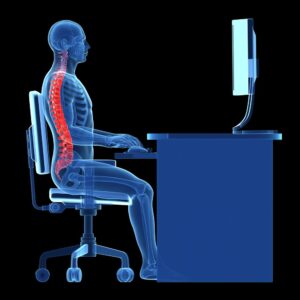
Spinal Alignment Using Ergonomics
Implementation of Ergonomics Isn’t Everything
Following ergonomic guidelines is important, but it’s no cure-all. I’ve seen first-hand how strict implementation doesn’t prevent injuries or illnesses. It’s not just about setting up an ergonomically correct workstation; it’s about how you use ergonomics and your actions beyond the desk.
.Productivity at Risk
Productivity suffers in the face of poor ergonomics. If left unchecked by inadequate ergonomic setups, muscle discomfort can lead to larger health issues, which clearly impacts work efficiency. Additionally, when comfort is compromised, so too is the quality and focus of our work.

Change positions often.
The Alternative Path to Ergonomics: Counterbalance and Adaptability
What should we do if traditional ergonomics aren’t the answer? Considering what our body goes through during the day provides a start. For instance, after hours of sitting with hunched shoulders and a downward gaze, try laying on your stomach in the evening, propped up on your elbows. This simple pose reverses the day’s harmful postures, opens your shoulders, and encourages a natural arch in your back.
Change your position frequently when sitting. Our bodies aren’t designed for stagnation. Consider including regular movement to counteract the inactive positions that ergonomics tries to perfect but sometimes cannot accommodate.
Beyond Ergonomics – A Holistic View
This blog is not a dismissal of ergonomics as a whole but a call to recognize its limitations and adapt it to fit individual needs. A successful approach to workplace well-being must be as dynamic and many-sided as the people it intends to help. It should include the environment and the needs of each human body.
Incorporating frequent movement, mindfulness of posture throughout the day, and exercises that counteract work-induced strain can complement the ergonomic framework and lead to healthier, more sustainable work habits. Ergonomics may not be the standalone solution we once thought. However, it still holds value as part of a broader, more personalized strategy. It’s about finding balance, adapting, and listening to your body’s needs. Your health, happiness, and productivity depend on it. To learn more about your body’s needs, book a functional movement assessment with one of Newleaf’s physiotherapists here.
By: DeVera Nybo, MBA

DeVera Nybo, CEO/Owner Newleaf Total Wellness Centre
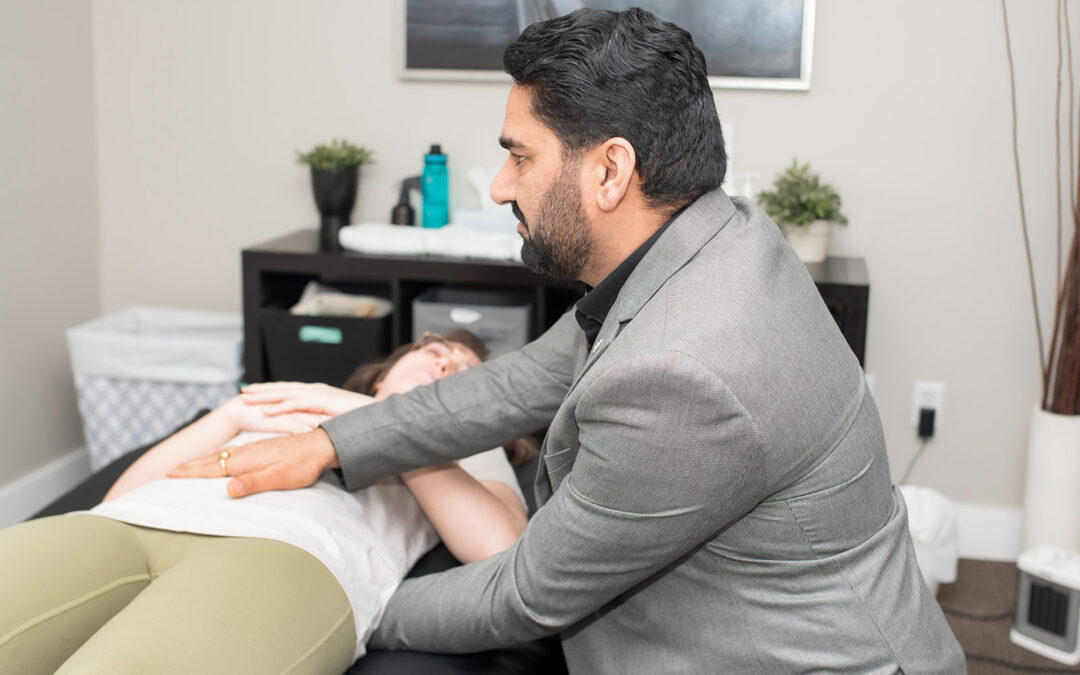
Therapy Options Explained
When you’re in pain or dealing with an injury, you might wonder what type of treatment is right for you. Seeing a healthcare professional like a chiropractor, physiotherapist, or manual osteopath can help offer relief and support for optimal recovery. However, sometimes, it can be a bit confusing to choose which type of specialist to go to, as they all have different approaches and methods to help alleviate pain and discomfort. In this blog, we will help you understand the critical differences between chiropractic, physiotherapy, and manual osteopathy, as well as the benefits and limitations of each.
Chiropractic Care:
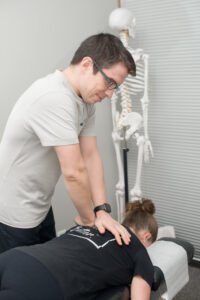
Dr. Andrew, DC
Chiropractic care focuses on diagnosing and treating musculoskeletal disorders, primarily through spinal adjustments. Through gentle manipulations, soft tissue therapy, and adjustments, chiropractors assist your body in healing itself and finding relief from discomfort.
The benefits of chiropractic treatment includes pain relief, improved range of motion, increased muscle strength, improved posture, and reduced stress. Chiropractic care can be especially beneficial for relieving back pain, neck pain, headaches, and sciatica. A chiropractor will also advise on lifestyle modifications to help support the effectiveness of the chiropractic treatments.
While chiropractors offer effective treatments, it’s important to consider a few factors. Spinal manipulation may carry a slight risk of adverse side effects. It’s extremely rare but possible to experience complications like worsening of a herniated disk or nerve compression. Additionally, some individuals may become reliant on regular visits to their chiropractor.
Chiropractic care may be right for you if …
- You suffer from chronic pain: Chiropractors can provide relief back pain, neck pain, and headaches and more. They focus on treating the source of the pain rather than just masking the symptoms.
- You want a natural approach to healing: Chiropractors use non-invasive, drug-free techniques that allow the body to heal naturally. Often, patients who want to avoid surgeries and medications prefer this approach.
- You want to improve your overall health: Chiropractic care is more than treating pain, it can also improve your overall health. Chiropractors can work with you to develop a wellness plan that includes nutrition, exercise, and other lifestyle habits.
- You want to avoid surgery: For many patients, chiropractic care can provide a safe alternative. Chiropractors can treat an array of conditions that might otherwise require surgery.
- You want to improve your athletic performance: Many professional athletes trust chiropractic care to help them achieve peak performance. Chiropractic care can improve flexibility, reduce injuries, and enhance overall athletic performance.
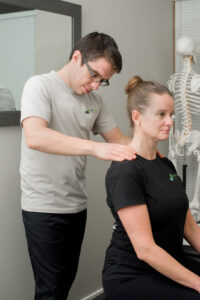
Dr. Andrew, DC
Chiropractic care may not be right for you if …
- You have a serious medical condition: Chiropractic care is not a substitute for medical treatment. If you have a serious medical condition, consult your doctor before seeking chiropractic care.
- You have a broken bone or fracture: Chiropractors do not treat broken bones or fractures. If you have a suspected fracture, you should seek medical attention immediately.
- You are pregnant: While chiropractic care is generally safe for pregnant women, choosing a chiropractor with experience treating them is crucial. You should also consult with your obstetrician before seeking chiropractic care.
- You have a herniated disc: Chiropractic treatment is effective for many back conditions, but it may not be appropriate for certain types of spinal injuries, such as a herniated disc. Your chiropractor can help you determine whether a chiropractic adjustment is the right treatment for your condition.
Physiotherapy:
Physiotherapy strives to help individuals regain movement and function after being affected by injury, illness, or disability. This is achieved through the use of different physical modalities, manipulation, mobilization, and exercises. Physiotherapy benefits include pain relief, improved joint mobility, muscle strength and function, balance and coordination, and increased endurance. Physiotherapy can be especially beneficial for sports injuries, musculoskeletal problems, neurological conditions, and post-operative rehabilitation.
It is important to note that physical therapy is not always a quick fix and may require weeks or even months to see noticeable results for some patients. The active nature of this form of rehabilitation necessitates patients’ active involvement, including doing exercises at home. A lack of commitment to these home exercises can prolong the rehabilitation process. Additionally, it is worth mentioning that physiotherapy has its limitations, particularly when addressing internal dysfunctions.
Physiotherapy may be right for you if …

Ed Middleton, PT
- You have an injury or condition that causes pain, stiffness, weakness, or limited mobility: Physiotherapists are experts in assessing and treating musculoskeletal and neurological conditions, such as back pain, arthritis, stroke, sports injuries, and post-surgical rehabilitation.
- You want to improve your physical performance or prevent injuries: Physical therapists can help athletes, dancers, and other active individuals fine-tune their bodies, optimize their movement patterns, and reduce their risk of getting hurt.
- You want to manage a chronic condition: If you have a lasting health challenge, such as diabetes, chronic pain, asthma, or heart disease, physical therapy can be a valuable part of your care team. Physiotherapists can help you learn self-management skills, cope with stress and fatigue, develop healthy habits, and enhance your quality of life.
- You want a non-invasive approach to healthcare: Many people prefer physiotherapy to other healthcare forms involving medication, injections, or surgery. Physical therapy is a natural and safe way to address health concerns without significant side effects or risks.
Physiotherapy may not be right for you if …
- You have a medical emergency or severe acute pain: If you have a life-threatening condition or sudden severe pain, you should seek immediate medical attention from a hospital or emergency department. Physiotherapy is not a substitute for urgent care; physical therapists do not provide medical diagnosis or emergency treatment.
- You have a condition or injury that requires specialized medical or surgical attention: In some cases, physiotherapy may not be able to replace or avoid surgical or medical interventions. For example, if you have a tumour, you may need surgery first and then physiotherapy to support your recovery.
- You have a personal or cultural preference for other forms of healthcare: Everyone has different beliefs, values, and preferences when it comes to healthcare. If you do not believe in holistic approaches like acupuncture, chiropractic, or naturopathy, physiotherapy may not align with you.
- You are not ready or motivated to participate in the treatment: Physiotherapy requires active participation from the patient to be effective. If you are unwilling or unprepared to engage in the treatment, such as attending appointments, doing exercises, following instructions, or communicating with your physiotherapist, you may not benefit as much as possible.

Cranial Sacral Therapy
Manual Osteopathy:
Manual osteopathy, on the other hand, focuses on the manual manipulation of the body’s musculoskeletal and visceral systems. Visceral manipulation is a hands-on therapy that targets the internal organs, addressing functional and structural imbalances within multiple body systems. Visceral manipulation can address dysfunctions caused by both physical and emotional factors.
The benefits of manual osteopathy include pain relief, improved range of motion, digestion, blood flow, organ function, sleep, and reduced stress. With its roots in indigenous medicine, bodywork and healing arts, manual osteopathy can be especially beneficial for conditions like chronic pain, digestive problems, irritable bowel syndrome, menstrual pain, bladder problems, anxiety, depression, migraine headaches, and hormonal imbalances.
Manual osteopathy also has limitations, such as long-term commitments due to gradual, gentle manipulations. Not all healthcare practitioners recognize it, and finding a practitioner who practices it in some areas can be challenging. Additionally, some health insurance plans do not cover or allow direct billing for manual osteopathy, which can lead to more significant out-of-pocket expenses for some patients.
Manual osteopathy may be right for you if …
- You experience chronic pain: Manual osteopathy is an effective method of pain relief for headaches, back pains, and neck pains. If you are tired of relying on medication to cope with your pain, manual osteopathy could be the solution.
- You prefer non-invasive treatments: Unlike invasive treatments like surgery or injections, manual osteopathy is a non-invasive therapy that involves hands-on techniques.
- You’re looking for a holistic treatment: Manual osteopathy focuses on the body as a whole. Therapists diagnose and treat the root cause of your problems, not just the symptoms.
- You want to improve your overall well-being: Manual osteopathy is known for balancing the body’s natural rhythm and facilitating the body’s capacity to self-heal.

Gagandeep Watts, MO
Manual osteopathy may not be right for you if …
- You’re facing a medical emergency: Manual osteopathy is not a substitute for emergency medical care. If you are facing a severe medical emergency, seek medical attention immediately.
- You have an acute illness: Manual osteopathy is ineffective for acute illnesses like flu, viral infections, and bacterial infections. In such cases, you may need to receive conventional medical care.
- You have broken bones: Manual osteopathy is not the correct treatment if you have broken or fractured bones. You will need to see an orthopedic surgeon for medical assistance.
- You are pregnant: It is necessary to speak with your doctor before undergoing treatment. Although manual osteopathy is generally safe, it is important to consult your doctor before considering it.
Conclusion:
Choosing the treatment that is right for you is important. Whether you decide on chiropractic care, physiotherapy, or manual osteopathy, each offers a unique approach to helping alleviate pain, restore function, and promote optimal health. The choice often comes down to personal preference and what type of issue you’re dealing with. It’s always a good idea to research and seek recommendations when choosing a healthcare professional to ensure they’re qualified, experienced and are right for you. A combination of these therapies may be beneficial for achieving optimal health and wellness.
Do you still have questions? Click here to book a free 15 minute consultation.
Written by: DeVera Nybo, MBA
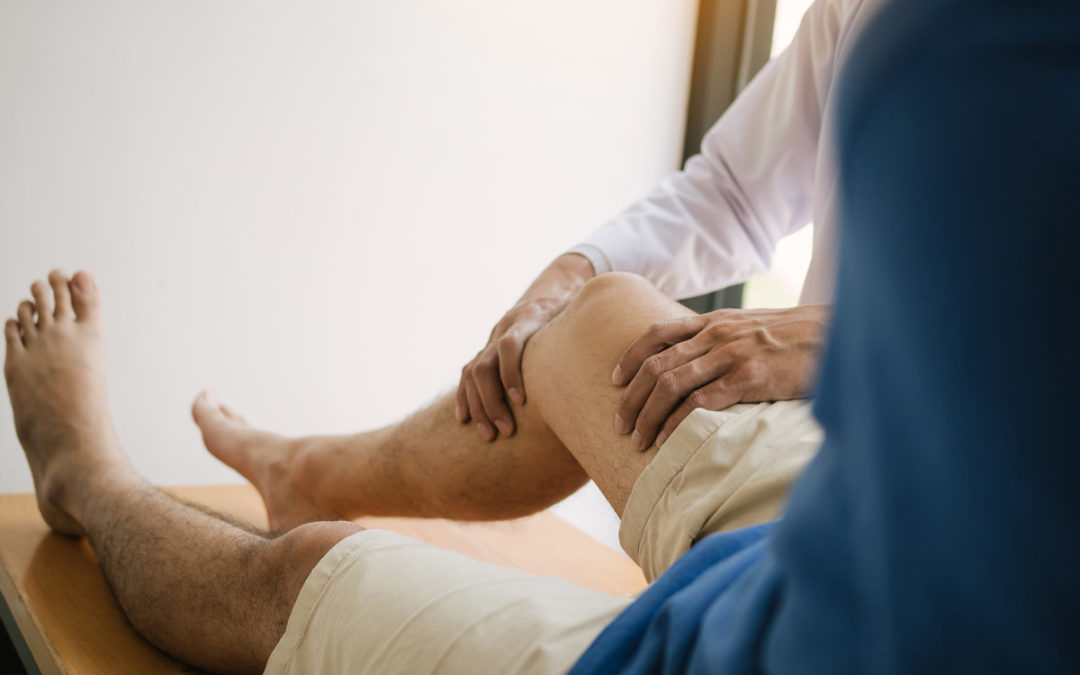
Injury Rehab and Prevention
Knee injuries are common in sports, and ACL tears are among the most serious. While there are many types of knee injuries, this article focuses on the most frequent sports-related cases — including ACL tears — and explores effective treatment options to support recovery and long-term joint health.
Ligaments
There are four main ligaments in the knee: the lateral collateral ligament (LCL), the medial collateral ligament (MCL), the anterior cruciate ligament (ACL), and the posterior cruciate ligament (PCL). The ACL is in front of the PCL and gets injured more often than the PCL.
The ligaments you injure can have partial or complete tears. There are typically two potential treatments: surgery or no surgery. What the patient needs depends on the extent of the injury and also the lifestyle of the patient. For example, a competitive skier will likely want/need his or her knee to work perfectly when the injury heals and is more likely to get surgery than someone whose main exercise is walking 100 feet to his or her vegetable garden.
For those who do not get surgery, they will likely need a knee brace for some period of time and even perhaps permanently while doing anything that puts a lot of stress on the knee.
Bone
Then there is the possibility of breaking one or more bones that comprise the knee. There is the knee cap, the patella, but there is also the bottom of the femur (thigh bone) and the tops of the tibia and fibula (lower leg bones). These breaks can be simple cracks that are not displace all the way to comminuted fractures in which bones break into a lot of little pieces.
So, again, the treatment will depend on the severity of the bone injury. More severe breaks will need surgery and possibly plates and screws. Simpler breaks can usually be treated with a cast or brace.
Surgeries on ligaments can sometimes be done arthroscopically or through one or more small incisions, and sometimes not.
In any case, no matter what your knee injury is, you will likely need some physical therapy at the end of it. Your joint will also be more prone to arthritis as you age, and you may experience some ongoing pain. We are experts on physiotherapy following knee injuries and can help you to regain maximum function in your knee.
If you have received a knee injury like any of those described above, give us a call in Abbotsford at (604) 850-2511, and let us help you.
Newleaf Wellness offers a variety of therapies including physiotherapy, chiropractic, naturopathic, and massage therapy in a warm and compassionate environment in our Abbotsford location.
If you have any questions about this article or would like to make an appointment, please contact us.


















































